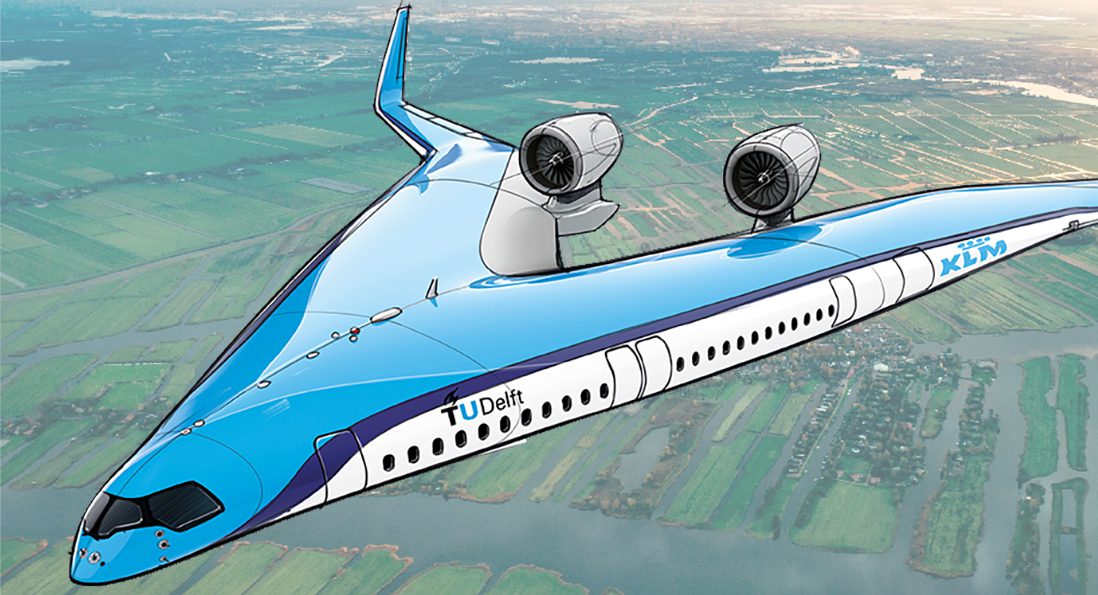Researchers and engineers from the Delft University of Technology (TU Delft) recently conducted a successful test flight of an energy-efficient Flying-V aircraft.
Together with a drone pilot operator, the team went to a German airbase on September 1st for the first real test flight of the scaled model designed by university researchers and funded by Dutch airline KLM.
After KLM’s announcement of the Flying-V project last year, the scaled aircraft model underwent a period of extensive wind tunnel testing and a series of ground tests in the Netherlands before it was approved to perform a test flight this summer.
Project leader Dr. Roelof Vos led his team of researchers and engineers as they took the 22.5-kilogram and 3-meter wide scale model of the Flying-V for flight tests in a well-guarded airbase in Germany, where they could work together with a team from Airbus.
The drone pilot’s task was to take-off and fly a number of test maneuvers and approaches until the batteries were nearly empty and land.
In a statement last week, Dr. Vos’ team said they were successful in the maiden flight of the scaled model.
Dr. Vos shared:
“One of our worries was that the aircraft might have some difficulty lifting-off since previous calculations had shown that ‘rotation’ could be an issue. The team optimized the scaled flight model to prevent the issue but the proof of the pudding is in the eating. You need to fly to know for sure.”
Flying-V’s successful maiden flight
During the test flight, rotation on take-off was performed easily and occurred at a speed of 80 km/h. The plane’s thrust was good and flight speeds and angles were as predicted.
According to aircraft researchers, testing new technology is never straightforward. The team had a challenging week in which they had to change the centre of gravity of the aircraft and fix the antenna to improve telemetry.
The flight has now also confirmed that the current design still shows too much ‘Dutch roll’, causing a slightly rough landing.
The next step for the team is to use the data collected during the flight for an aerodynamic (software) model of the aircraft. This will make it possible to programme it in a flight simulator to be used in future research, while further improving the flight characteristics. The team will also prepare the scale model for future flight tests.
What are the features of the Flying-V aircraft?
The Flying-V is a design for a highly energy-efficient long-distance airplane.

The aircraft’s design integrates the passenger cabin, the cargo hold, and the fuel tanks in the wings, creating a spectacular V-shape.
Computer calculations from TU Delft researchers have predicted that the aircraft’s improved aerodynamic shape and reduced weight will reduce fuel consumption by 20% compared to today’s most advanced aircraft.
With this prospect of improving aviation and lowering fuel consumption, Dutch airline KLM has been a major partner of the project since last year.
Also due to KLM’s support, Dr. Vos said the project team has been able to build the scale model which was first presented at the 100th anniversary of the Dutch airline in October 2019.
Aside from KLM, various business partners are now involved in the project, including one of the world’s leading aircraft manufacturer Airbus.
With Airbus also supporting and partnering on the project, Vos said partners are working together on a research plan to fine-tune the concept. Their next step is to provide the Flying-V aircraft with sustainable propulsion, taking into account that the design seems highly suitable to carry liquid hydrogen instead of kerosene.
Read More: Xi Supports Establishment of Beijing as Pilot Free Trade Zone



